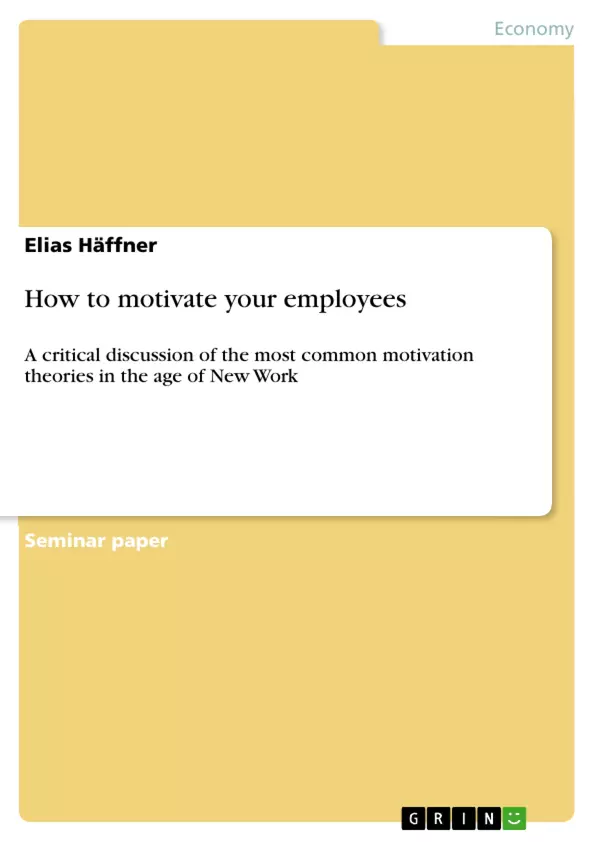The main objective of the term paper is to examine different scientific approaches of motivation and to discuss whether they are still suitable to today’s fast changing working environment and appropriate for the age of “New Work”.
In today’s business era of globalization and digitalization, highly skilled and motivated employees are more and more found to become a competitive advantage. Whereas mediocre employees might be sufficient to manage an average business, employees with a negative attitude towards their working life can destroy a flourishing company over time.
Increasing turnover rates within a company’s workforce, higher reject rates in terms of production and lower productivity are just some consequences resulting from decreasing motivation. On top of that, a higher motivation level is considered as having major influence when it comes to less staff absenteeism. In fact, there seems to be a direct link between employee’s overall engagement and their employer’s profitability, as companies with higher employee engagement are up to 21 % more profitable. Therefore, motivated and committed staff can be described as success factor and one of our economies’ most valuable assets, not only in the service sector. Although we know of these factors to be decisive for a fulfilling career and a business’ success, less than 20 % of workers world-wide are dedicated to their work, unfortunately. Altogether, motivation of employees can have tremendous economic side effects, which should not be underestimated.
Inhaltsverzeichnis (Table of Contents)
- 1 Introduction
- 2 Definition of Terms
- 2.1 Motivation
- 2.2 Intrinsic and Extrinsic Motivation
- 3 Types of Theories
- 4 Most common theories of motivation
- 4.1 Hierarchy of Needs
- 4.2 Motivation Profile
- 4.3 Two Factor Theory
- 4.4 Expectancy Theory
- 4.5 Goal Setting Theory & Management by Objectives
- 5 Critical Discussion of Theories in the Era of "New Work"
- 5.1 Definition and Overview
- 5.2 Classification and Evaluation of Theories
- 6 Conclusion
Zielsetzung und Themenschwerpunkte (Objectives and Key Themes)
This term paper aims to critically discuss the most common motivation theories and their applicability in the context of “New Work”.
- Definition and understanding of motivation and its types
- Overview of key motivation theories, including their strengths and weaknesses
- Analysis of the relevance of these theories in the contemporary work environment
- Discussion of the concept of “New Work” and its impact on employee motivation
- Evaluation of how motivation theories can be adapted and applied in a changing work landscape
Zusammenfassung der Kapitel (Chapter Summaries)
The first chapter introduces the topic of employee motivation and its relevance within the context of leadership communication. Chapter 2 provides definitions of key terms, including motivation itself and its intrinsic and extrinsic forms. Chapter 3 outlines various types of motivation theories, while Chapter 4 delves into specific, well-established theories like Maslow's Hierarchy of Needs, the Motivation Profile, and the Two Factor Theory. Chapter 5 offers a critical discussion of these theories in the context of “New Work,” exploring the changing landscape of work and its implications for employee motivation.
Schlüsselwörter (Keywords)
This term paper focuses on the core concepts of employee motivation, intrinsic and extrinsic motivation, major motivation theories, and their application in the contemporary workplace. It specifically examines the influence of “New Work” principles on traditional motivation models and the potential for adapting these theories to the evolving work environment.
- Quote paper
- Elias Häffner (Author), 2022, How to motivate your employees, Munich, GRIN Verlag, https://www.grin.com/document/1185334



